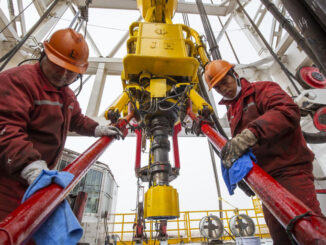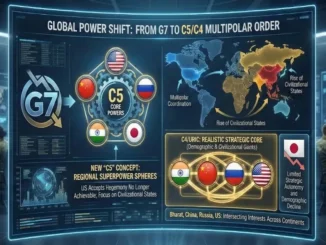
Overdevelopment: A Double-Edged Sword of Dominance
Are you from California or New York and need a tax break?
This overdevelopment stems from a decade-long push to dominate green technologies, resulting in production capacities that far exceed both domestic and global demand.In the solar sector, overcapacity is stark. China’s battery manufacturing alone is twice the domestic demand and 1.2 times the global demand, as reported by the Rhodium Group.
The solar panel market remains oversupplied, with experts predicting the glut could persist for up to two more years.
Utilization rates in the finished solar power industry plummeted to just 23% in early 2024, a trend that has continued into 2025 amid cutthroat competition.
This overproduction has led to a “race to the bottom,” where manufacturers sacrifice quality for lower prices, undermining profitability across the board.The EV sector faces similar challenges. With over 100 active EV brands in 2025—down from peaks of nearly 500 in previous years—China’s market is characterized by intense competition for state incentives.
Battery prices have plummeted due to overcapacity, aiding deployment but eroding margins. Global EV sales grew 38% year-over-year in April 2025, yet China’s manufacturing hub status has created a trillion-yuan “graveyard” of excess inventory and financial losses.
Analysts note that companies are losing an average of $11,500 per vehicle sold, highlighting the unsustainable nature of this boom.
Beijing’s response has been proactive. The Ministry of Industry and Information Technology (MIIT) is tightening oversight in crowded sectors like EVs and solar, aiming to eliminate “disorderly price competition” through upgraded standards and forced consolidations.
Recent guidelines encourage mergers and acquisitions to phase out outdated capacity, with the government rejecting an “industrial rat race” that prioritizes quantity over quality.
Despite these efforts, experts warn that a full turnaround is far off, as overcapacity continues to plague deployment and profitability.
Bankruptcies in 2025: The Human Cost of Overcapacity
Notable cases include Suntech, which initiated pre-restructuring creditor claims in June 2025, and Runergy, a former top global player now facing an “unprecedented winter.”
Other firms like those mentioned in industry reports have entered restructuring due to the deepening glut, with at least 12 bankruptcies reported since July 2024 extending into 2025.
Analysts predict a “tsunami” of insolvencies among smaller players, though major firms with cash reserves may weather the storm.
The EV sector has seen even more dramatic fallout. Between 2018 and 2025, over 400 Chinese EV companies have ceased operations, with a significant portion occurring this year amid a brutal price war.
The number of EV manufacturers dropped from 738 in 2023 to 591 in 2024, and further declines are evident in 2025.
High-profile bankruptcies include Neta Auto’s parent company, Zhejiang Hozon New Energy Automobile, which entered proceedings in June 2025 after sales plummeted.
Ji Yue Auto, a Baidu-Geely joint venture, filed for bankruptcy liquidation in July, while luxury EV maker HiPhi declared bankruptcy in August 2024, with ripple effects into 2025.
McKinsey forecasts that by 2030, fewer than 50 Chinese EV brands will survive, underscoring the “survival of the fittest” dynamic.
These bankruptcies reflect broader economic strains, including soaring costs post-subsidy cuts and intensifying competition from giants like BYD and Tesla.
The financial crisis fears are mounting, with some experts warning of a potential “EV financial crisis” if price wars persist.
The Impact of the Trump Tariff War: Exacerbating the Crisis
These measures, building on the original Trump-era trade war (2018-2020), aim to protect U.S. manufacturing but have ripple effects on China’s overcapacity.For solar, tariffs have raised import prices by $0.10-0.15 per watt, hurting Chinese exporters and contributing to domestic bankruptcies as global demand shifts.
U.S. tariffs on Southeast Asian solar imports—often rerouted from China—could further disrupt supply chains, potentially ceding more production to China if domestic incentives wane.
Experts argue these barriers undermine the global energy transition by raising clean tech costs, with China’s solar firms facing “cloudy” prospects and increased bankruptcy risks.
In the EV space, the 100% tariff effectively bans Chinese-made vehicles from the U.S. market, forcing companies to relocate production or absorb losses.
This has torpedoed export growth, exacerbating overcapacity and financial carnage, with losses estimated in the trillions of yuan.
Broader tariffs on batteries (up to 25%) and critical minerals have raised U.S. prices, creating supply chain uncertainties and stunting domestic EV adoption
While intended to bolster U.S. industry, these policies may harm cleantech growth, as higher costs deter investment in renewables
Overall, the tariff war has reinforced China’s overcapacity by limiting export outlets, accelerating consolidations, and pressuring Beijing to reform. Yet, it risks slowing the global shift to clean energy, as tariffs create inefficiencies and higher prices worldwide.






